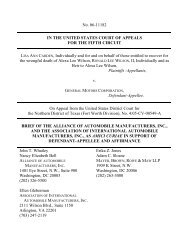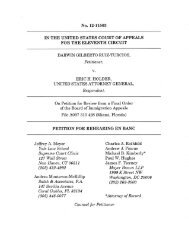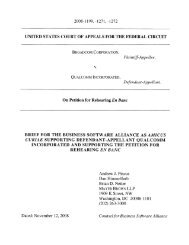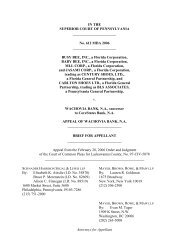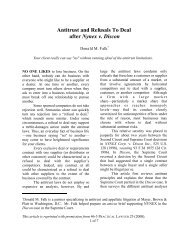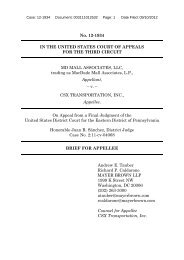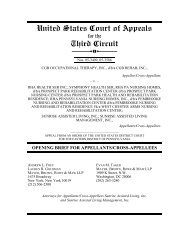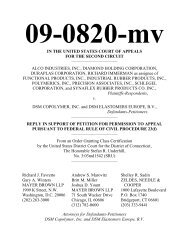No. 5-99-0830 IN THE APPELLATE COURT OF ... - Appellate.net
No. 5-99-0830 IN THE APPELLATE COURT OF ... - Appellate.net
No. 5-99-0830 IN THE APPELLATE COURT OF ... - Appellate.net
You also want an ePaper? Increase the reach of your titles
YUMPU automatically turns print PDFs into web optimized ePapers that Google loves.
R. 12575-77, 12552. The court concluded that, even though there were no IPI instructions<br />
for class actions, there was no need to go beyond the IPI instructions on breach of contract<br />
in order to fully and fairly instruct the jury. R. 12464-65. That conclusion was wrong, as<br />
a matter of law. See Swartz v. Sears, Roebuck & Co., 264 Ill.App.3d 254 (1st Dist. 1<strong>99</strong>3)<br />
(it is error to refuse to give a non-IPI instruction where there are no pattern instructions on<br />
the issue in question and the IPI instructions are an incorrect statement of law). How class<br />
actions work is not intuitively obvious to lay people. Thus, “it [is] impossible to say that<br />
jurors, without instruction, would know the burden of proof to be applied in a particular<br />
case.” Rikard v. Dover Elevator Co., 126 Ill.App.3d 438, 441 (5th Dist. 1984).<br />
The instruction the circuit court ultimately gave to the jury was at best confusing and<br />
at worst affirmatively misleading. The court instructed the jury that “[p]laintiff class<br />
members and defendant State Farm entered into a contract” — as if there were only one<br />
contract between State Farm and the millions of class members. It went on to explain that<br />
plaintiffs had the burden of proving three things: that “the members of the plaintiff class<br />
perform[ed] all obligations required of them under the contract”; that “defendant failed to<br />
perform its obligations under the contract and breached said contract”; and that “as a result<br />
of the breach of contract, the plaintiff class sustained damages.” A. 61. The court never<br />
explained what it meant for State Farm to breach its “contract” with the class — whether that<br />
meant that plaintiffs had to prove that State Farm failed to restore all or almost all or most<br />
or many or only some of the class members’ vehicles to their pre-loss condition.<br />
In closing argument, State Farm reiterated the burden of proof that plaintiffs had<br />
assumed: to prove that “all the parts are always inferior, and always failed to return the car<br />
-84-



